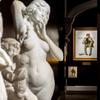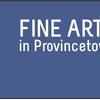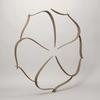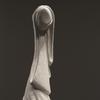Five Important Considerations When Buying Fine Art
- November 06, 2017 12:34
The art market is a $45 billion global industry. With so much activity, in galleries, online, at fairs, and elsewhere, the act of collecting can be daunting. Whether you have eclectic taste or are assembling a highly curated collection, the five considerations below will help you build a collection with confidence.
Provenance and Literature
An artwork’s provenance, or chain of ownership, is crucial in establishing its authenticity and historical importance. It helps to trace the whereabouts of a work over time, backwards to the point it exited an artist’s studio. In addition to building a case for an artwork’s authenticity, the provenance can furthermore add tremendous value. Take, for instance, works by lesser-known artists. Their markets might be weaker than some of their most celebrated contemporaries, but if the work was owned by royalty, a celebrity, or an infamous politician, that provenance hugely affects its desirability. The same is true even for works by masters. When assessing a work’s provenance, request any documentation that relates to the piece’s history and previous ownership.
This brings us to the importance of literature. When a work receives scholarly attention in art publications, that supports the case for its authenticity and value. Of critical importance is an artwork’s inclusion in an artist’s catalogue raisonné, or a volume published by the expert of a particular artist that documents all known works of their production. For artists who lack catalogue raisonnés, a letter of authenticity from the artist’s living expert can serve the same purpose.
Lastly, an artwork’s exhibition history helps to build its provenance and credibility. Whether included for exhibition at a museum, gallery, or official art institutions like the Parisian Salon or Royal Academy, an exhibition history is a mark of quality and importance An artwork’s exhibition history is typically documented in the catalogue raisonné. See, for example, Claude Monet’s Au Val Saint-Nicolas près Dieppe, Matin which has been exhibited in numerous major museum, such as Chicago’s Art Institute, London’s Royal Academy, and Boston’s Museum of Fine Arts. Additionally, it was owned by two of history’s most influential dealers, Durand-Ruel and Wildenstein & Co.
Condition
Especially when considering works that have age to them, proper care is a must. Don’t shy away from a painting with conservation. Proper restoration is fully reversible, and is a sign that previous owners sought to maintain and preserve the work you’re considering. Of course, the most valuable works have no or minimal conservation and remain in excellent condition, but these are exceedingly rare, particularly for non-contemporary works. Be cautious of pieces that have been overdone or have substantial repairs, which can undermine their value. When in doubt, ask, and don’t shy away from asking that the piece be examined by a professional conservator before finalizing an acquisition.
Quality
The best way to develop a sense for superior artworks is to expose yourself to as much art as possible. Visit museums and galleries, read art publications and online resources, and consult other collectors to familiarize yourself with the most skilled and influential artists from any period or genre. Develop relationships with reputable dealers and experts in the categories of art that interest you. And by all means, ask questions. Not only will your art historical knowledge expand, but you’ll develop and define your own distinct taste.
Rarity
Because so many masterpieces reside in museum collections, the supply of important works by master artists is forever shrinking. In many countries outside of the U.S., it is actually illegal for museums to sell or “deaccession” artworks. Rarity is, therefore, inherently linked to value. For example, a newly rediscovered painting by Leonardo da Vinci, who produced approximately twenty known works, is expected to sell for more than $100 million at Christie’s this month.
Rarity can also relate to the context of an artist’s oeuvre. Most artists establish hallmarks for which they are known, whether that’s working in a particular style, medium, subject matter, color palette or the like. Artworks outside of an artist’s primary niche can be extremely sought after. For instance, Pieter Brueghel the Younger is well-known for painting scenes originally composed by his father Pieter Brueghel the Elder’s prints. His The Payment of Tithe is a unique composition by the Younger and, unlike the vast majority of his paintings, it is one of the handful that is signed.
[image with caption]
The Intangible
Collecting art is a very personal endeavor. All of the research and due diligence in the world can’t make up for a work of art you don’t truly connect with. Always consider how a work makes you feel. Does it tell a story or convey an emotion that speaks to you on a visceral level? Does it leave questions unanswered that bring you back for more? Is this a piece you can easily envision living with, and could it bring you joy for years to come? While everything else may is technical, the intangible aspect of an artwork is what makes it truly desirable and the act of collecting all the more rewarding.




















